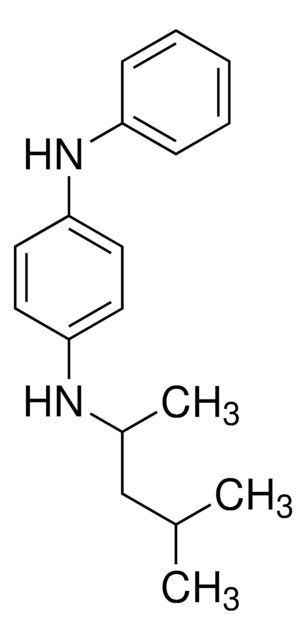241393
N-Phenyl-p-phenylenediamine
98%
Synonym(s):
4-Aminodiphenylamine, Variamine Blue RT Base
About This Item
Recommended Products
Quality Level
Assay
98%
form
liquid
mp
68-72 °C (lit.)
solubility
ethanol: 10 mg/mL, clear, very dark red (Violet to brown to black solution)
SMILES string
Nc1ccc(Nc2ccccc2)cc1
InChI
1S/C12H12N2/c13-10-6-8-12(9-7-10)14-11-4-2-1-3-5-11/h1-9,14H,13H2
InChI key
ATGUVEKSASEFFO-UHFFFAOYSA-N
Looking for similar products? Visit Product Comparison Guide
General description
Application
Signal Word
Warning
Hazard Statements
Precautionary Statements
Hazard Classifications
Acute Tox. 4 Oral - Aquatic Chronic 2 - Eye Irrit. 2 - Skin Sens. 1
Storage Class Code
11 - Combustible Solids
WGK
WGK 3
Flash Point(F)
390.2 °F
Flash Point(C)
199 °C
Personal Protective Equipment
Choose from one of the most recent versions:
Already Own This Product?
Find documentation for the products that you have recently purchased in the Document Library.
Our team of scientists has experience in all areas of research including Life Science, Material Science, Chemical Synthesis, Chromatography, Analytical and many others.
Contact Technical Service










